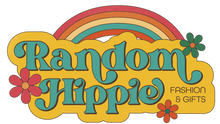The terms "hippie" and "boho" (short for bohemian) are both associated with unconventional, free-spirited, and alternative lifestyles, but they have distinct origins and style aesthetics. Here are the key differences between hippie and boho:
Hippie
1. Origin: The hippie movement emerged in the 1960s as a countercultural and social movement that advocated for peace, love, and anti-establishment values. It was a reaction to societal norms and promoted a communal, idealistic lifestyle.
2. Philosophy: Hippies were known for embracing non-conformity, anti-war sentiments, environmental consciousness, and a rejection of materialism.
3. Fashion Style: Hippie fashion was characterized by a relaxed and eclectic style. It included tie-dye clothing, bell-bottom pants, flowy dresses, fringe, headbands, peace sign accessories, and natural elements like feathers and beads.
4. Symbols: Hippies often used symbols like peace signs, yin-yang, and the flower power symbol to represent their values.
5. Music and Festivals: Hippies were associated with the music of the time, including folk, psychedelic rock, and the "Woodstock" festival.
Boho (Bohemian):
1. Origin: The boho style draws inspiration from the bohemian lifestyle, which originated in the 19th-century Europe, particularly in Paris's artistic community. Bohemians were artists, writers, and intellectuals who embraced an unconventional, free-spirited lifestyle.
2. Philosophy: Boho style embraces creativity, individuality, and a love for nature and art. It celebrates personal expression and a bohemian, nomadic way of life.
3. Fashion Style: Boho fashion is characterized by a mix of vintage, ethnic, and natural elements. It includes flowy maxi dresses, embroidered tops, fringe accents, crochet, loose-fitting layers, floppy hats, and statement jewelry.
4. Symbols: While there are no specific symbols associated with boho style, it often incorporates eclectic and artistic elements.
5. Music and Festivals: Boho style doesn't have specific musical ties like the hippie movement, but it is often associated with music festivals that embrace a free-spirited and artistic vibe.
In summary, the hippie movement emerged as a countercultural movement in the 1960s, while boho style draws inspiration from the bohemian lifestyle of the 19th century. Both share a love for unconventional and free-spirited living, but their fashion aesthetics, symbols, and historical contexts differentiate them from each other. Today, both styles continue to influence fashion and lifestyle trends, with many people embracing elements from both hippie and boho cultures.
At Random Hippie, we consider ourselves "modern hippies" in that our values are allowing everyone to be who they are and who they choose to be and encouraging love for ourselves and one another. We embrace non-conformity and we embrace being different and strive to spread kindness to everyone who walks through our door. We have adopted an eclectic fashion style, taking inspiration from both the hippie and boho styles. Some of our favorite brands we carry in store are Soul Flower (local and eco-conscious), Gypsy Rose, Peaceful People (local), Angie and over a dozen local artists and creators who we collaborate with.

